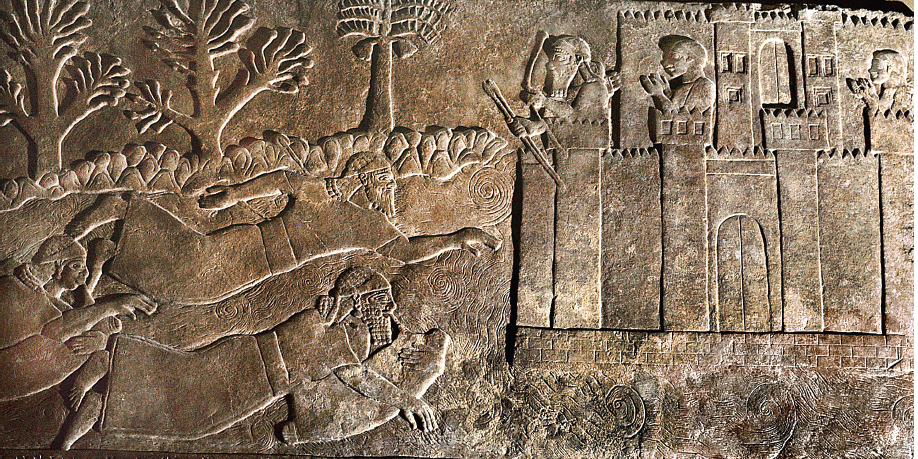A History of World Societies:
Printed Page 55
A History of World Societies Value
Edition: Printed Page 52
Assyria, the Military Monarchy
Starting from a base in northern Mesopotamia around 900 B.C.E., the Assyrians began a campaign of expansion and domination, conquering, exacting tribute, and building new fortified towns, palaces, and temples. Over the next several centuries, Babylonia, Syria, Phoenicia, Israel, and many other states fell. By means of almost constant warfare, the Assyrians created an empire that stretched from their capital of Nineveh on the Tigris River to central Egypt. Revolt against the Assyrians inevitably promised the rebels bloody battles and cruel sieges followed by surrender, accompanied by systematic torture and slaughter, and sometimes deportations.
Assyrian methods were certainly harsh, but in practical terms Assyria’s success was due primarily to the size of its army of infantrymen, archers, and charioteers and to the army’s sophisticated and effective military organization. In addition, the Assyrians developed a wide variety of siege machinery and techniques, including excavations to undermine city walls and battering rams to knock down walls and gates. Never before in this area had anyone applied such technical knowledge to warfare. The Assyrians even invented the concept of a corps of engineers who bridged rivers with pontoons or provided soldiers with inflatable skins for swimming. The Assyrians also knew how to coordinate their efforts, both in open battle and in siege warfare. Not only did the Assyrians know how to win battles, but they also knew how to take advantage of their victories. As early as the eighth century B.C.E., the Assyrian kings began to organize their conquered territories into an empire. The lands closest to Assyria became provinces governed directly by Assyrian officials. Kingdoms beyond the provinces were not annexed but became dependent states that followed Assyria’s lead and also paid Assyria a hefty tribute.
By the seventh century B.C.E. Assyrian power seemed firmly established. Yet the downfall of Assyria was swift and complete. Babylon won its independence in 626 B.C.E. and joined forces with a new group, the Medes, an Indo-

Modern archaeology has brought the Assyrians out of obscurity. In the nineteenth century archaeologists unearthed huge sculpted figures of winged bulls, human-